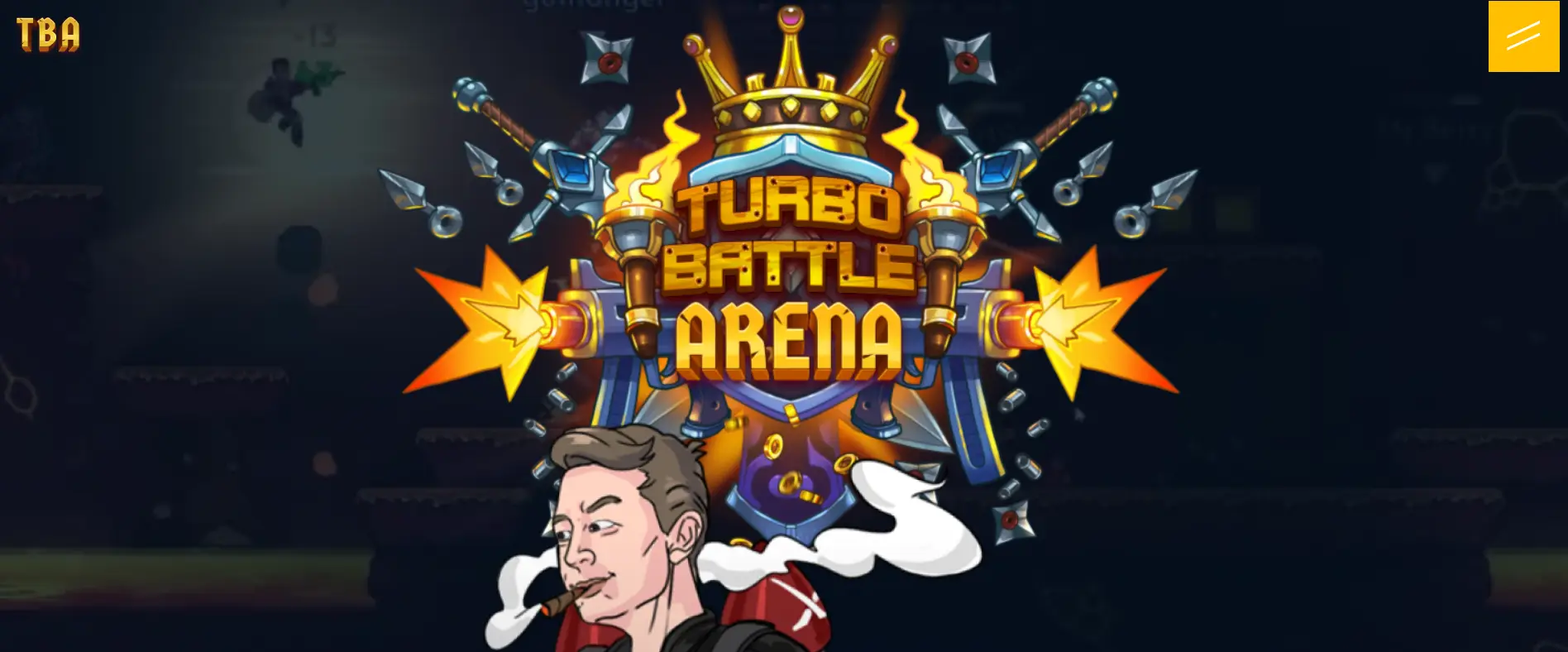Turbo Battle Arena (TBA) is a Web3 2D platformer game that combines the atmosphere of classic arcades, esports battles, and blockchain economy. Here, players not only have fun — they create characters, design maps, own NFT assets, and earn $TBA tokens. A well-structured economy, a strong team, and partnerships with technology leaders make the project one of the notable contenders for success in the GameFi space.
- Concept and Gameplay
- Economic Model of Turbo Battle Arena
- Partnerships and Infrastructure TBA
- Team Role and Development Strategy
- Future of the TBA Ecosystem

Concept and Gameplay
Turbo Battle Arena is designed as a dynamic metaverse for PC and mobile players, inspired by legendary platformers but enhanced with blockchain functionality. At its core is the win-to-earn competitive model, where earnings depend on skill. The game world includes themed arenas such as Retro World with an 8-bit style and Meme Arena with Web3 culture elements. Matches feature up to 100 players, and the in-game currency Eggs serves as the basis for the prize pool. Special attention is given to content creation tools — the character creator and level builder. Players can mint their creations as NFTs, sell them, and earn income when used by others, encouraging creative engagement.
Economic Model of Turbo Battle Arena
The economy of Turbo Battle Arena is built on several interconnected elements that maintain a balance between gaming and financial interests. The main goal is to create a sustainable system that motivates both active match participants and long-term investors. The in-game currency Eggs is used to join battles, while the main token $TBA grants access to functions and purchases. NFT characters and the staking mechanic create additional earning and interaction opportunities.
| Economy Element | Description | Role for Players |
|---|---|---|
| $TBA Token | The main token, used for match participation, staking, and in-game purchases. | Access to content and economic functions. |
| Eggs | In-game currency used to pay for matches and convertible into $TBA. | Earning tool in battles. |
| NFT Characters | Unique game heroes with different characteristics and appearances. | Ownership, collection, trading. |
| Staking | Locking $TBA to receive fees and bonuses. | Passive income and in-game privileges. |
This structure gives players a clear understanding of how they can interact with the game's economy and benefit from it. At the same time, the developers have maintained a balance between the competitive component and the opportunity to earn, preventing the game from turning into pure speculation. The TBA economic model stimulates activity and retains users in the ecosystem for the long term.
Partnerships and Infrastructure TBA
The technical base and strategic partnerships play a key role in TBA's development. Without reliable infrastructure and strong allies, it is difficult to ensure scalability and retain a global audience. That is why the project actively cooperates with leading companies in the fields of cloud technology, blockchain platforms, and marketing solutions. These collaborations help improve performance, expand functionality, and attract new users.
- Immutable — support for NFTs and cross-platform capabilities.
- AWS — high-performance cloud infrastructure.
- Xerial — SDK, marketplace, and multi-chain integrations.
- Hourglass — successful token sale in less than 2 minutes.
- Blockconsult — assistance in marketing and economic strategy.
Each of these partnerships has a specific role in the project's development: Immutable ensures NFT security and flexibility, AWS — operational stability, Xerial — technical tools for content expansion, Hourglass — investment support, and Blockconsult — entry into new markets. Together, these companies form a solid foundation for TBA's long-term growth.
Team Role and Development Strategy
The TBA team combines experienced developers, marketers, and Web3 specialists, providing the project with a broad range of competencies. Key figures include Zodar with 30 years in the software industry, Clay, who oversees the gaming direction, and Lucas Cullen, responsible for smart contract development and blockchain integration security. This composition allows simultaneous focus on gameplay, technical stability, and market promotion.
The development strategy highlights three priorities: improving game mechanics, expanding the NFT ecosystem, and scaling to international markets. To achieve this, the team introduces new modes, enhances balance and match mechanics, and develops customization tools for players. An important part of the plan is the implementation of GameFi as a Service, enabling third-party developers to release their own products on the TBA platform and integrate them into the overall economy. This approach not only strengthens the game's position but also turns it into a platform for content creation.
Future of the TBA Ecosystem
TBA's development plans cover both expanding game functionality and enhancing social interaction among players. Developers plan to add offline campaigns, new arenas with unique conditions, and expanded guild features, which will enhance the competitive spirit and create conditions for team strategies. Special attention is given to monetizing user-generated content: authors of popular maps and characters will receive a percentage of in-game transactions, stimulating community creativity.
The key direction will be developing cross-platform capabilities, allowing players on PC, mobile devices, and cloud services to unite in one game space. In addition, TBA is considering integration with other Web3 projects, opening opportunities for collaborations and digital asset exchange. This development vector allows the project to aim for long-term success in the GameFi segment and maintain an active community for many years.




